Before it arrives in your home, the coffee bean goes through significant transformations.
The legend
Ethiopian shepherd Kaldi observed that his goats became more energetic after eating the reddish-yellow fruits of coffee bushes. He tried them himself and discovered the energetic effect of coffee.
History
The coffee fruit was originally consumed in natura by humans and animals in the region of Ethiopia. Around 1000 AD, the Arabs began to boil it.
In Brazil
The first coffee plants were brought to Belém (Pará) in 1727. Due to their favorable climates, coffee was grown in Maranhão, Bahia, Rio de Janeiro, São Paulo, Paraná and Minas Gerais.
-

Planting
Soil preparation, selection and planting of seedlings and irrigation.
-

Pre-harvest
Preparation of the crop, which includes cleaning the "skirt" of the coffee plant (the soil under the leaves).
-

Harvest
After ripening, harvesting is done manually and/or mechanically by harvester.
-

Post-harvest
This includes the steps of washing, separating, drying, processing and bagging.
Arábica (Coffea arabica)
It produces a sweet and exquisite coffee, with different degrees of acidity. The caffeine content is around 1.4%. Arabica is responsible for three quarters of the world's coffee production.
Robusta (Coffea canephora)
It produces a coffee with a characteristic aroma and flavor. With a caffeine content of 2.5%, Robusta accounts for about a quarter of world's coffee production.
Rondônia
Robusta
With average temperatures above 26°C, the region is the second largest Brazilian producer of the Robusta species
Planalto da Conquista
Arábica
With a tropical climate, and an average temperature of 22°C, the region produces coffee with a sweet aroma, medium body and citric acidity.
Cerrado Baiano
Arábica
Known for producing coffee with a pleasant taste, slightly fruity and floral aroma, good acidity and excellent sweetness.
Espírito Santo
Arábica e Robusta
It accounts for a fifth of the national harvest. The region produces pleasantly sweet coffees with an aroma of caramel and medium acidity.
Zona da Mata Mineira
Arábica
The hot, humid and rainy climate is ideal for the cultivation of fine coffees by small producers.
Cerrado Mineiro
Arábica
The region produces full-bodied coffees with an intense aroma, caramel, citric acidity and long-lasting flavor.
Sul de Minas Gerais
Arábica
The largest coffee producer in the world, with around 500,000 hectares of coffee. The region produces coffee with a fruity aroma and low acidity.
Mogiana Paulista
Arábica
One of the most traditional coffee producing regions in Brazil. It produces a sweet and full-bodied coffee.
Norte do Paraná
Arábica
The region produces a sweet coffee with citric acidity, full-bodied with floral, citric, fruity aromas and notes of chocolate and caramel.
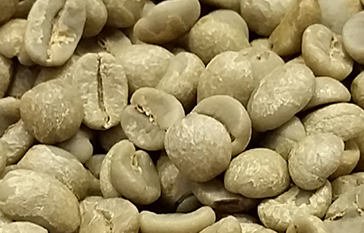
Processing
Cleaning and removal of skin, pulp and internal bean film. This can be done naturally (manually) or by peeled cherry method (the pulp mechanically removed) or pulped coffee (pulp, peel and film mechanically removed).
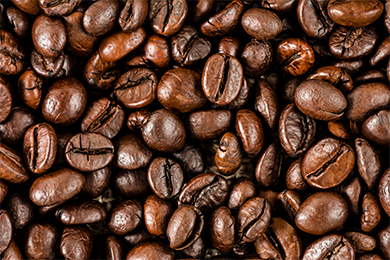
Roasting
Depending on the method, the beans are exposed to temperatures between 120°C and 230°C for up to 12 minutes. The combination of temperature and time results in the roasting profile, which directly influences the quality of the coffee.
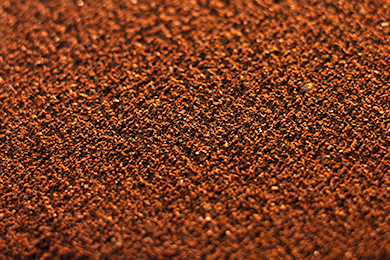
Grinding
There are different grinds, each suitable for a type of preparation: Extra-fine, medium-fine, medium and coarse. Each one results in a beverage with different flavors, for consumption at home or in coffee shops.
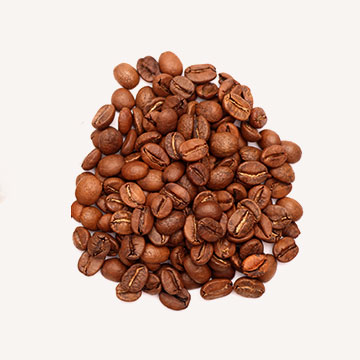
Beans
For grinding before preparation in a manual or automatic grinder.
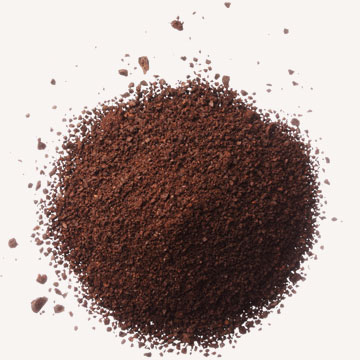
Ground
Most common way of buying coffee. It can be used for both filter and non-filter methods.
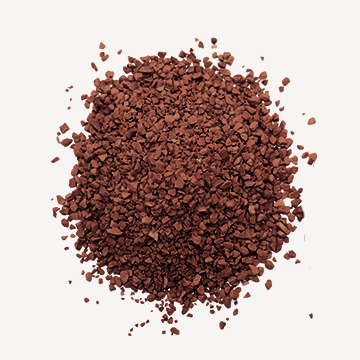
Instant
It does not require any equipment as it is dissolved directly in hot water.

Espresso
The perfect quantity and grind for a 50 ml cup. Features a dense cream.

Short black
The perfect quantity and grind for a 50 ml cup. Features a dense cream.

Ristretto
A 15 ml to 20 ml coffee. Considered the nectar of coffees. It is extremely sweet when well prepared.

Italian espresso
Similar to espresso and short black, but prepared with different blends. It contains 25 ml to 35 ml.
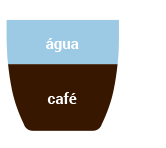
“Café Carioca” coffee
An espresso diluted with hot water in the proportion of 25 ml to 35 ml of coffee and 15 ml to 20 ml of hot water.
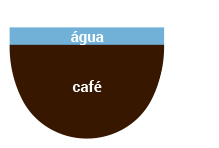
Long black or double
Similar to a "café carioca", but served in a 50 ml to 110 ml cup and may contain hot water.

Filtered coffee
The most common way of preparing coffee in Brazil. It is a concentrated coffee, which is filtered and generally served in a 50 ml cup.
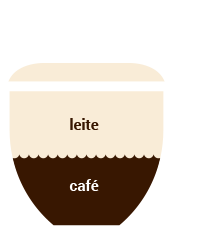
Coffee with milk
Filtered or espresso coffee in the same proportion as hot milk. May be prepared with steamed milk.
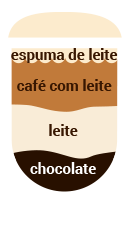
Mocha
Generally a three-part preparation composed of chocolate syrup, coffee and milk, steamed milk and foam.
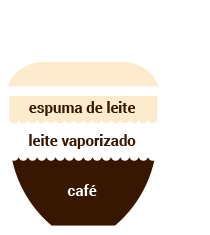
Italian Cappuccino
1/3 espresso, 1/3 steamed milk and 1/3 milk foam.
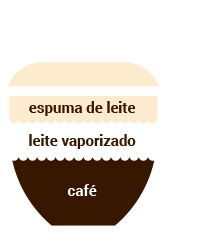
Cappuccino
The same as Italian cappuccino, but you can add cinnamon or chocolate and the foam should be thick and creamy.
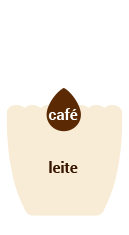
The Brazilian “Pingado”
A traditional coffee in Brazil, the beverage consists of a glass of hot milk with a small amount of coffee.
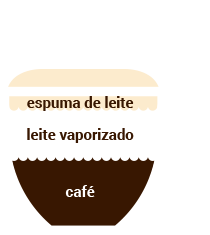
Latte
Known as a “latte” or “café latte”, it is an espresso with steamed milk and a fine layer of milk foam.

Macchiato
Also known as "coffee with foam", it is an espresso with a dash of foamed milk on top.
-
Coffee grower/producer
Responsible for taking care of the coffee plantation, harvesting, preparation of the beans and processing.
-
Coffee Hunter
This person looks for premium quality coffees and exotic coffees in Brazil and worldwide.
-
Classifier/sorter
Sorts the green beans and establishes their quality based on specific criteria.
-
Master roaster
Creates the roast profile, controlling the nuances of the coffee.
-
Taster
Through the palate and nose, this person identifies and evaluates the characteristics of the beans, in addition to preparing different coffee blends.
-
Barista
Responsible for the preparation of coffee. This person must know all of the different ways to prepare coffee and must thoroughly understand the coffee bean.












